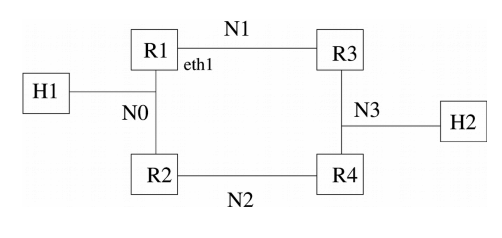I am trying to understand count-to-infinity avoidance techniques, and came across this topology. Now, suppose the interface eth1 on R1 has gone bad, and assuming that split horizon, triggered updates and poison reverse are all enabled, what is the effect of hold-down timeout on convergence? Will it help to avoid the count-to-infinity problem or
unnecessarily delay the learning of alternate routes?
Any help on this would be appreciated!
1 Answer
Holddown Timer is another loop-prevention mechanism employed by distance vector routing protocol($DVR$). This feature prevents a router from learning new information about a failed route. When a router receives the information about the unreachable route, the holddown timer is started. The router ignores all routing updates for that route until the timer expires (by default, $180$ seconds in $RIP$). Only updates allowed during that period are updates sent from the router that originally advertised the route. If that router advertise the update, the holddown timer is stopped and the routing information is processed.
In your example Router $R_1$ has advertised its directly connected subnet $R_2$ through $RIP$. After some period of time, the interface $Eth1$ on $R_1$ fails and the router $R_1$ sends the poisoned route to $R_2$. $R_2$ receives the routing update, marks the route as unreachable and starts the holddown timer.During that time all updates from any other routers about that route are ignored to prevent routing loops. This allows more time for the network to converge.
If interface $Eth1$ on $R_1$ comes back up, $R_1$ again advertises the route. $R_2$ process that update even if the holddown timer is still running, because the update is sent by the same router that originally advertised the route.

